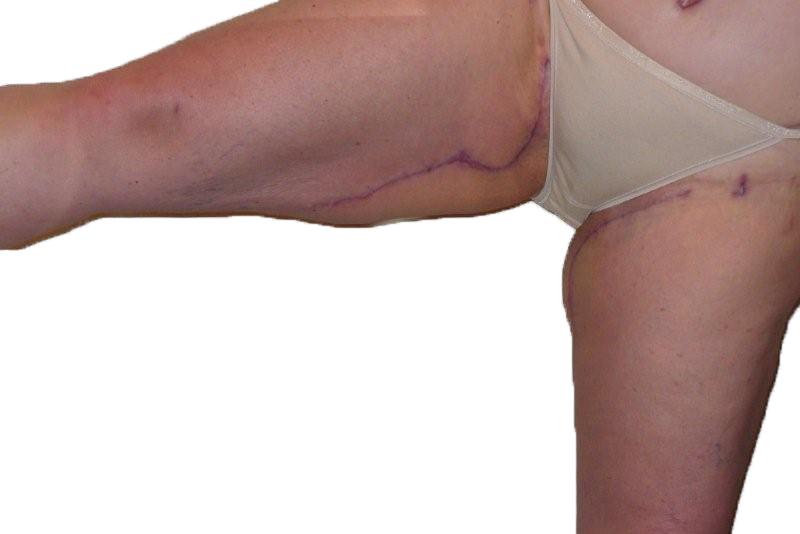Key Takeaways
- Genioplasty, or chin surgery, requires thorough preparation, including medical evaluations and understanding the chosen surgical technique to ensure the best outcome.
- The duration of the genioplasty procedure itself can vary greatly, usually between one to three hours, depending on the complexity and the technique used.
- Understanding the different techniques of genioplasty is crucial for setting realistic expectations and making an informed decision about which method best suits your needs.
- Post-operative recovery is a significant phase of the genioplasty process, with initial recovery taking about two weeks and full recovery taking up to three months.
- Following your surgeon’s pre- and post-operative instructions carefully can help minimize the risk of complications and ensure a smoother recovery period.
- Being well-informed about each stage of the genioplasty process, from preparation through recovery, empowers patients to actively participate in their care plan and achieve satisfactory results.
Preparing for Genioplasty
Consultation Phase
The first step involves scheduling a consultation with a surgeon. It’s crucial to discuss your aesthetic or functional goals during this meeting. The surgeon will evaluate if genioplasty is the right choice based on your facial structure and desired outcomes.
They will also explain the risks and benefits, helping you make an informed decision. This phase is foundational in setting realistic expectations for both the patient and the surgical team.
Choosing Technique
Understanding the types of genioplasty is next. There are mainly two: jumping and sliding. Each technique addresses different needs.
Jumping genioplasty is often recommended for those needing significant changes in chin position. Sliding genioplasty, on the other hand, allows for more subtle adjustments. Your surgeon will recommend the best technique based on your specific case, ensuring that the chosen method aligns with your goals.
Pre-operative Instructions
Preparing for surgery is critical. Follow all pre-operative instructions provided by your surgeon to ensure a smooth procedure. This includes fasting for a certain period before surgery and making necessary medication adjustments.
Adhering to these guidelines minimizes risks and promotes better recovery outcomes. It’s essential to communicate openly with your medical team about any concerns or questions you may have during this time.
Understanding Genioplasty Techniques
Jumping Genioplasty
Jumping genioplasty stands out for its ability to increase chin height. Surgeons cut the chin bone and secure it in a new position, adding vertical length. This technique suits patients needing significant chin adjustments.
Patients see their chins transformed dramatically, with outcomes visible soon after surgery. Recovery involves managing swelling and discomfort but leads to long-lasting results.
Sliding Genioplasty
Sliding genioplasty is preferred for horizontal changes. It involves sliding the chin bone forward or backward. This method offers precise control over the chin’s projection, enhancing facial harmony.
It can correct both receding and overly prominent chins, making it versatile. The cosmetic benefits of internal incisions ensure no external scars mar the face’s appearance.
Combination Surgeries
Combining genioplasty with other procedures amplifies facial enhancement. Rhinoplasty or cheek augmentation alongside genioplasty can produce a more balanced and aesthetically pleasing face.
This approach tailors surgeries to individual needs, offering a comprehensive solution for facial symmetry.
Procedure Timeframe
Surgery Length
The duration of both jumping and sliding genioplasty procedures is a crucial aspect for patients to consider. Typically, these surgeries are completed within about one hour. This estimation helps in planning and scheduling the procedure effectively.
Patients should be aware that the surgery’s efficiency stems from its execution entirely inside the mouth. This approach, while minimizing visible scarring, adds complexity and requires precise surgical skill, influencing the overall duration.

Combined Operations
When genioplasty is planned alongside other facial surgeries, understanding the timing becomes even more critical. It ensures patients have realistic expectations about the total operative time. Combining procedures can extend the duration significantly, but it also means a single recovery period for multiple enhancements.
This strategy requires careful coordination between surgical teams to manage both the complexity and length of the operation efficiently. Patients benefit from discussing their goals with their surgeon to understand how additional procedures might impact their genioplasty surgery duration.
Post-Op Recovery
Initial Symptoms
Patients can expect temporary numbness in the lower lip and noticeable swelling in the chin area. This swelling typically peaks around two to three days after the surgery. It then gradually subsides over the following two weeks.
These symptoms are a normal part of the healing process. They begin to diminish as the body recovers.
Care Instructions
Following post-operative care instructions is crucial for a smooth recovery. Doctors usually provide detailed guidance on dietary restrictions and wound care. Adhering to these recommendations helps facilitate healing and minimizes the risk of complications.
It’s important for patients to stick closely to their surgeon’s advice during this period.
Alleviating Discomfort
To manage swelling and discomfort, patients are advised to use medication prescribed by their surgeon. Cool compresses can also offer relief and aid in reducing swelling more effectively.
Sleeping with the face elevated is another recommended practice. It can significantly ease discomfort and accelerate the reduction of swelling during the initial recovery phase.
Closing Thoughts
Genioplasty can significantly impact your facial harmony, boosting confidence and self-esteem. You’ve learned about preparing for the surgery, the different techniques available, what to expect in terms of duration, and how to navigate the post-op recovery phase. This journey requires commitment and patience, but understanding these steps ensures you’re well-equipped for a smooth process. Trust in your chosen specialist’s expertise and follow their guidance closely for optimal results.
Now’s the time to take action. If you’re considering genioplasty, reach out to a board-certified surgeon to discuss your goals and concerns. Remember, this decision is about enhancing your well-being and aligning your physical appearance with how you feel inside. Make the move today for a happier tomorrow.
Frequently Asked Questions
How long does genioplasty surgery take?
Genioplasty surgery typically lasts between 1 to 3 hours. The exact duration depends on the complexity of the procedure and the specific technique used.
What should I do to prepare for genioplasty?
To prepare for genioplasty, follow your surgeon’s instructions, which may include stopping certain medications, fasting for a period before the surgery, and arranging for post-operative care and transportation.
Can you explain the different techniques used in genioplasty?
There are primarily two techniques: sliding genioplasty, where the chin bone is cut and repositioned, and implant genioplasty, where an implant is placed to enhance the chin’s shape. The choice depends on individual needs and desired outcomes.
What is the recovery time after genioplasty?
Recovery time varies but generally involves a few days of downtime with swelling and discomfort that can last up to several weeks. Most people return to normal activities within 2 weeks but should avoid strenuous activities for up to 6 weeks.
Will I need someone to take care of me after my genioplasty surgery?
Yes, it’s advisable to have someone available to help you for at least the first 24-48 hours after surgery as you recover from anesthesia and begin your initial recovery phase at home.
Is genioplasty painful?
Patients typically experience some pain and discomfort following genioplasty, which can be managed with prescribed pain medication. Pain levels vary but are generally manageable with proper care and medication.











